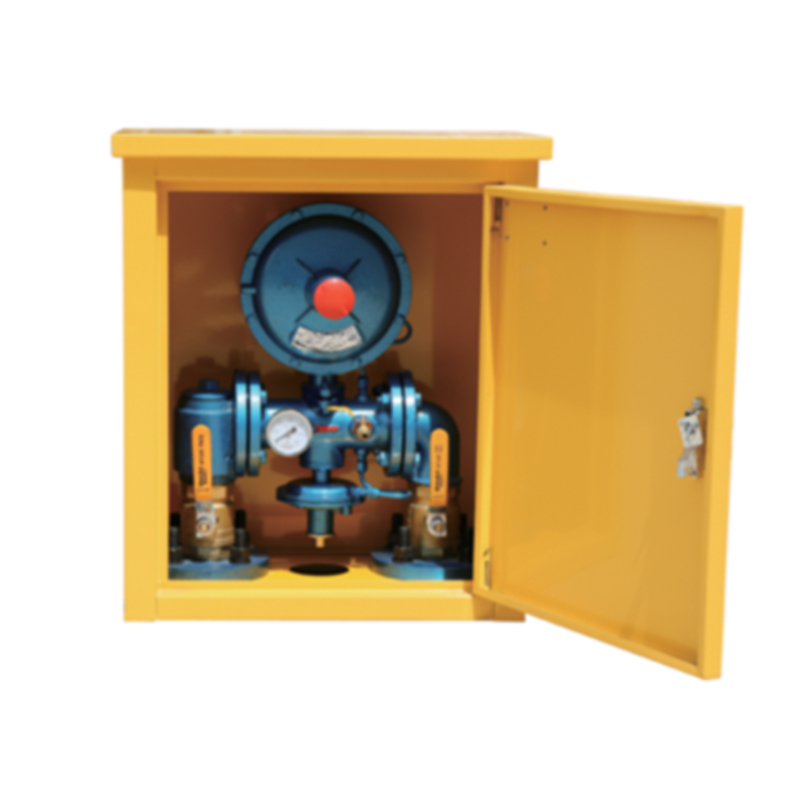
Oct . 13, 2024 00:51
Back to list
Gas Pressure Regulation Valve Overview and Applications in Energy Systems
Understanding Gas Pressure Reducing Valves Function and Importance
Gas pressure reducing valves (PRVs) are critical components in various industrial, commercial, and residential applications where controlled gas flow is necessary. These devices ensure that gases, whether natural gas, propane, or any other type, are delivered at a safe and usable pressure for various systems. In this article, we will explore the working principles, types, applications, and maintenance of gas pressure reducing valves.
What is a Gas Pressure Reducing Valve?
A gas pressure reducing valve is a mechanical device designed to decrease the pressure of gas from a high-pressure source to a lower, more manageable level. This is essential for preventing damage to equipment, ensuring safety, and maintaining the efficiency of gas utilization. PRVs automatically adjust the pressure of the gas as it passes through, providing a stable and consistent output regardless of input variations.
How Do Gas Pressure Reducing Valves Work?
The operation of a gas pressure reducing valve hinges on a few fundamental principles. Essentially, when high-pressure gas enters the valve, it acts against a diaphragm, which is a flexible membrane that moves in response to pressure changes. When the gas pressure exceeds the preset level, the diaphragm moves to close the valve, restricting gas flow and hence reducing the output pressure to the desired level. Conversely, if the output pressure drops, the diaphragm allows more gas to flow through, thereby balancing the system.
Most PRVs use a spring-loaded mechanism to maintain this balance. The spring is configured to resist the diaphragm's movement; the tension determines the output pressure level. By adjusting the spring tension, technicians can set the desired output pressure, customizing the system for specific requirements.
Types of Gas Pressure Reducing Valves
There are several types of gas pressure reducing valves, each suited for different applications
1. Single-Stage PRVs These are ideal for systems that require a straightforward pressure reduction, suitable for applications where the inlet and outlet pressures are not vastly different.
2. Two-Stage PRVs Used in systems demanding precise pressure control, these valves offer enhanced stability and are particularly beneficial in applications with significant fluctuations in inlet pressure.
.
4. Pilot-operated PRVs These use a secondary pilot valve to control the main valve. They are ideal for high flow rates and provide excellent regulation over a wide pressure range.
صمام تخفيض ضغط الغاز

Applications of Gas Pressure Reducing Valves
Gas pressure reducing valves are utilized in various sectors, including
- Residential Applications In homes, PRVs regulate the natural gas supplied for heating, cooking, and appliances, ensuring safety and efficiency. - Commercial Kitchens Restaurants use PRVs to ensure that cooking equipment receives gas at a consistent pressure for optimal performance.
- Industrial Facilities Manufacturers employ PRVs in processes requiring precise gas pressures for machinery and equipment, such as in chemical processing and power generation.
- Energy Distribution Utility companies utilize PRVs to manage pressure levels in gas distribution networks, protecting pipelines and equipment from damage caused by fluctuations.
Maintenance of Gas Pressure Reducing Valves
Regular maintenance of gas pressure reducing valves is essential for ensuring their reliability and safety. Key maintenance steps include
- Routine Inspections Regular checks for wear, leaks, and corrosion can prevent catastrophic failures.
- Calibration Periodically recalibrating the valve ensures that it maintains the correct pressure levels, crucial for performance.
- Cleaning Keeping the valve free of debris and contaminants is vital, as blockages can impede flow and cause pressure spikes.
- Replacement of Parts Over time, components such as diaphragms and springs may wear out and need replacement to maintain optimum performance.
Conclusion
Gas pressure reducing valves are integral to the safe and efficient utilization of gas across various applications. Understanding their function, types, and maintenance can significantly impact operational efficiency and safety. As industries continue to evolve, the importance of effective gas management through advanced PRVs cannot be overstated. As such, ensuring that these valves are properly maintained and utilized is essential for both safety and operational effectiveness.
Next:
Latest news
-
Safety Valve Spring-Loaded Design Overpressure ProtectionNewsJul.25,2025
-
Precision Voltage Regulator AC5 Accuracy Grade PerformanceNewsJul.25,2025
-
Natural Gas Pressure Regulating Skid Industrial Pipeline ApplicationsNewsJul.25,2025
-
Natural Gas Filter Stainless Steel Mesh Element DesignNewsJul.25,2025
-
Gas Pressure Regulator Valve Direct-Acting Spring-Loaded DesignNewsJul.25,2025
-
Decompression Equipment Multi-Stage Heat Exchange System DesignNewsJul.25,2025

